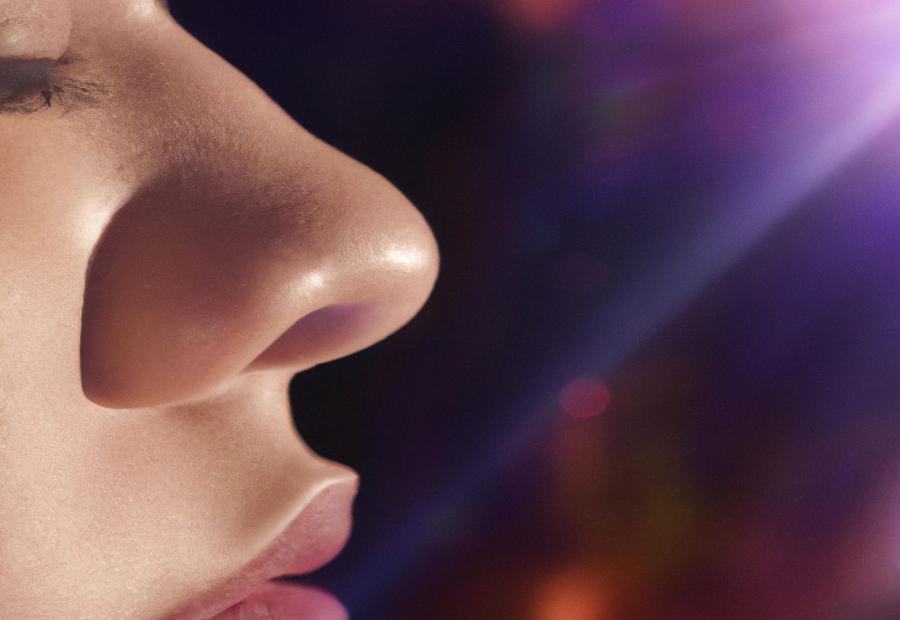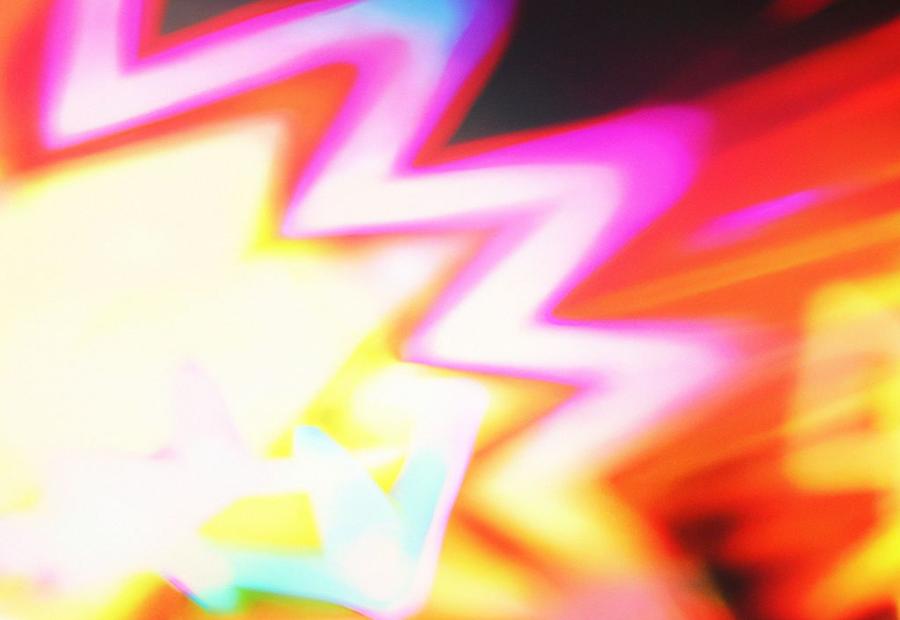Last Updated on July 12, 2023 by Francis
.jpg)
Contents
Key Takeaways:
- Lucid dreaming is possible even for individuals with Aphantasia: Despite the absence of visual imagery, individuals with Aphantasia can still experience and engage in lucid dreaming.
- Imagination and visualization play crucial roles in lucid dreaming with Aphantasia: Although visual imagery may be limited, other senses and alternative experiences can be harnessed to enhance the lucid dreaming process.
- Techniques and strategies can enhance lucid dreaming experiences for individuals with Aphantasia: Experts offer insights and research, providing recommendations on methods that can optimize lucid dreaming for people with Aphantasia.

Photo Credits: Meaning-Of-Number.Com by Mark Jackson
Lucid dreaming, a captivating realm where one becomes aware of their dreams and gains control over them. In this section, we will embark on a fascinating journey into the concept of wake-induced lucid dreaming, explore the astounding capabilities of the sleeping self, unravel the role of mental repertoire in lucid dreaming, and examine how this extraordinary phenomenon leaves no trace in waking life. Prepare to delve into the enigmatic world of lucid dreaming and uncover the secrets of this mesmerizing state of consciousness.
The concept of Wake Induced Lucid Dreaming
Wake Induced Lucid Dreaming – WILD – is an incredible idea. It shows us how much our minds can do when we’re asleep. WILD helps us connect our waking and dreaming states.
Mental repertoire is important when practicing WILD. This is the collection of our thoughts, memories, experiences, beliefs and emotions. Having a diverse mental repertoire helps us make vivid dreams when lucid dreaming.
The strange thing is, lucid dreams often can’t be recalled when we wake up. We may have vivid experiences, but struggle to remember them once conscious again. This raises questions about memory retention during sleep.
Exploring WILD gives us a chance to tap into our subconscious potential while awake. We can learn ways to reach lucidity in dreams and discover hidden realms within our minds. By understanding WILD, we can know more about consciousness and the power of the human mind.
Wake Induced Lucid Dreaming helps us uncover the unknown possibilities of our subconscious while we sleep.
Exploring the capabilities of the Sleeping Self
Exploring the Sleeping Self is a captivating topic in lucid dreaming. Lucid dreaming is when a person knows they’re dreaming while still asleep. This opens a world of chances to study and use the possibilities of our sleeping selves. Researchers are attempting to uncover hidden abilities and unutilized potential in our unconscious minds during sleep.
Lucid dreaming lets people actively engage with their dreams. They can make conscious choices and have control in their dream world. This offers a unique chance to investigate different elements of our inner selves, such as emotions, sensations, memories, and problem-solving. By researching this realm and its capabilities, we can get useful knowledge of our subconscious mind and potentially reveal new paths for personal growth and self-exploration.
Moreover, studying the Sleeping Self illuminates how these experiences convert into reality. Even though lucid dreaming just occurs in the dream world, it can have an effect on waking life. Abilities developed in lucid dreaming, like improved visualization or mental rehearsal, may transfer to activities done while awake. This shows the connection between our dreams and reality, implying that exploring the capacities of the Sleeping Self may have real-life meanings.
In addition, researchers have discovered mental repertoire is an essential part of lucid dreaming. Mental repertoire is an individual’s collection of thoughts, images, memories, and experiences that affect their dream content and capacity to move around in dreams. By expanding their mental repertoire through practices like meditation or creative visualization exercises, people may boost their lucidity and self-awareness during dreams.
Overall, researching this topic gives a plentiful base to understand the abilities inside our Sleeping Selves. By looking into lucid dreaming and its effect on reality, researchers are trying to open the immense potential of our subconscious minds and enable people to access their hidden capacities for personal growth and self-discovery.
It is worth noting that although studies and research give valuable knowledge of the Sleeping Self, individual experiences may differ. Therefore, further examination is needed to completely comprehend the complexities and possibilities connected to this remarkable phenomenon.
The dream world is a great spot for those with a mischievous nature. In this world, even the goofiest jokes don’t appear in reality.
The role of Mental Repertoire in lucid dreaming
Lucid dreaming involves becoming aware and conscious within a dream. Mental repertoire plays an important role in this. It’s a collection of thoughts, images, memories, and emotions. It increases the potential for vivid and immersive dream experiences.
A rich mental repertoire helps create visually rich and detailed dreams. People can control the dream environment, explore new realms, or revisit past events. It also contributes to the clarity and coherence of lucid dreams. People can recall past experiences and knowledge and construct dream narratives.
Mental repertoire also includes other sensory modalities, like auditory sensations, tactile perceptions, tastes, and smells. People can transfer these abilities into their lucid dreams. Even people with aphantasia can still engage with vivid sensory experiences during lucid dreaming.
Using various techniques and strategies, people can tap into the full potential of lucid dreaming. It unlocks the hidden depths of their subconscious mind.
Lucid dreaming as a phenomenon that leaves no trace in waking life
Lucid dreaming is a phenomenon in which people become aware they are dreaming and can control their dreams. It has no effect on waking life. Individuals can do things in their dreams that are impossible or undesirable in reality, without any lasting consequences. This makes it distinct from other dream states. People can explore events, emotions, and environments that are otherwise inaccessible.
Lucid dreaming gives people a chance to have vivid and immersive experiences in their own dreams. These memories remain, even after waking up. The experiences can be realistic and intense. But once awake, there is no physical evidence of them.
Lucid dreaming’s ephemeral nature shows that it does not leave an imprint or influence on the individual’s waking state. Research is needed to understand its potential for people with different cognitive abilities, like Aphantasia – the inability to visualize mental imagery. But, lucid dreaming has potential for exploration and self-discovery. It allows us to delve into our own minds, while leaving no trace in our waking lives.
The Relationship Between Aphantasia and Lucid Dreaming

Photo Credits: Meaning-Of-Number.Com by Mason Lee
The relationship between Aphantasia and Lucid Dreaming: diving into the impact of Aphantasia on visual imagery and exploring the intriguing connection with Lucid Dreaming.
Understanding Aphantasia and its impact on visual imagery
Aphantasia is a condition where people can’t generate mental images or visualize. This lack of visual imagery has a big effect on how individuals with Aphantasia perceive and comprehend the world. Without the capacity to picture things, those with Aphantasia rely on other senses to process info and comprehend their environment.
Those with Aphantasia have difficulties understanding Aphantasia and its influence on visualization. Struggling to understand instructions that require mental images and to depict complex visuals. Activities such as reading fiction or remembering past events become less vibrant and more reliant on descriptive language than images. This impairment even applies to dreams, raising questions about lucid dreaming for those with Aphantasia.
Despite the issues caused by Aphantasia, some still report having lucid dreams. Usually lucid dreaming requires visualization and shaping one’s dream scenarios through mental imagery, however some with Aphantasia have discovered alternative methods to induce lucidity. These methods may involve other sensory experiences like sound, touch, taste, or emotional sensations rather than only visual cues.
Research on this subject is still limited, but there appears to be a spectrum within Aphantasia regarding vividness during dreams. Some individuals do report having immersive and detailed dreams even without visual imagery in real life. This demonstrates that understanding Aphantasia and its influence on visual imagery doesn’t always stop lucid dreaming for those with Aphantasia.
Exploring the connection between Aphantasia and Lucid Dreaming
Aphantasia: Where imagination takes a permanent vacation! Investigating the relationship between Aphantasia and Lucid Dreaming reveals a possible connection between not having visual imagery in wakefulness, and the ability to have lucid dreams. Aphantasia is when people can’t create mental images; this could potentially prevent them from visualizing and regulating their dreams while lucid.
Research suggests that those with Aphantasia may still experience lucid dreams, but through different means. They don’t need to have visual imagery for vivid, controlled dreams. Instead, they may use other senses or cognitive processes.
We still need to discover how Aphantasia individuals navigate the dream realm without visual imagery. This shows the adaptability of the human mind in dealing with sensory differences. By learning from alternative experiences, people with Aphantasia can improve their lucid dreaming journeys.
Overall, understanding the connection between Aphantasia and Lucid Dreaming opens up fresh ways to explore dream research.
Aphantasia: What It Is and How It Affects Visual Imagery

Photo Credits: Meaning-Of-Number.Com by Steven Clark
Aphantasia, a condition that affects visual imagery, can have a significant impact on one’s ability to visualize and experience sensory stimuli. In this section, we’ll explore the defining characteristics of aphantasia and how it influences visual imagination and sensory experiences. Discover the intriguing world of aphantasia and gain a deeper understanding of how this condition shapes our perception of the world around us.
Definition and characteristics of Aphantasia
Aphantasia is a condition when individuals cannot create mental images in their minds. It is known by its lack of visual imagination and sensory experiences. People with Aphantasia can’t visualize objects, people, or places in their mind’s eye, making it hard to remember visual details.
This can have an effect on various aspects of someone’s life, such as their memory, creativity, and the ability to imagine future events. People with Aphantasia have a different way of thinking to those who can easily picture images in their minds. They must use language and abstract concepts more to understand information.
It is possible that Aphantasia is a spectrum disorder, meaning the severity can vary. Some may have a milder form where faint visuals are still accessible, or rely more on other senses. Severe forms may have no visual imagery at all.
Aphantasia’s impact on visual imagination and sensory experiences
Aphantasia’s effects on visual imagination and sensory experiences are huge. Aphantasia refers to the inability to view mental images, which can really limit an individual’s capacity for visual thinking or recollecting visual memories. People with this condition find it hard to create clear images in their minds, making it difficult to imagine scenarios or picture objects. Without the capability to mentally see an image, individuals with aphantasia may struggle with tasks that heavily depend on visual imagery.
The lack of visual imagination also affects one’s sensory experiences. Visualization plays a crucial role in intensifying other senses, so people with aphantasia may find it hard to totally immerse themselves in sensory experiences. For example, when recalling a past vacation, they may battle to visualize the scenery or remember specific details about the environment.
Despite these restrictions, individuals with aphantasia can still engage in lucid dreaming. Lucid dreaming is when individuals become aware that they are dreaming and can control their dreams. Although lucid dreaming generally involves vivid visualization and imaginative experiences, people with aphantasia handle it differently.
Those without aphantasia rely on visually rich dreamscapes for their lucid dreams, while individuals with aphantasia come up with alternative strategies. They may concentrate more on other sensory elements in their dreams, like sound or touch, rather than mainly relying on visual imagery. This adaptation enables individuals with aphantasia to still experience and engage with lucid dreaming despite their limited visual imagination.
Can You Lucid Dream with Aphantasia?

Photo Credits: Meaning-Of-Number.Com by Edward Rivera
Can you experience lucid dreams if you have aphantasia? Let’s dive into the possibility of lucid dreaming with aphantasia and explore the role of imagination and visualization in this fascinating realm.
Exploring the possibility of lucid dreaming with Aphantasia
Lucid dreaming with Aphantasia is a captivating thought that asks questions about the possibility of vivid and controlled dreams without imagery. Aphantasia is a lack or severe impairment of mental pictures. Exploring this concept requires looking at the connection between daydreaming and visualization.
Wake Induced Lucid Dreaming (WILD) gives individuals with Aphantasia a way of lucid dreaming. WILD entangles waking and dreaming, maintaining consciousness and awareness. Individuals can use other senses, such as sound or touch, to interact with their dreams instead of using mental images.
Mental repertoire is another factor to ponder. Though they don’t have visual imagery, those with Aphantasia have a wealth of non-visual elements in their imagination.
There are also unique strategies and techniques for those with Aphantasia to induce and manage lucid dreams. Such as, focusing on sensory experiences, verbal affirmations before sleep, and external aids like music/guided meditation for Aphantasia.
Experts have insights and ongoing research to help those interested in lucid dreaming with Aphantasia. This understanding of how the absence of mental imagery affects lucid dreams is essential.
Despite the lack of mental pictures, individuals with Aphantasia can still have meaningful experiences during lucid dreaming. This absence may provide alternate paths for exploration and personal growth.
Exploring lucid dreaming with Aphantasia shows that while mental imagery is necessary in conventional ways, there are other options and methods for those with Aphantasia. Through alternative senses, mental repertoire, tailored techniques and expert guidance, individuals can have their own, unique lucid dream adventure.
Understanding the role of imagination and visualization in lucid dreaming
Imagination and visualization play a key role in a lucid dream experience. When you enter a lucid dream, you become aware of your dream state and can control it. Imagination and visualization skills are needed to create and control dream scenarios.
Imagining is essential in lucid dreaming. Dreamers need their imaginative powers to come up with new landscapes, events, and characters. This makes it possible to dive into the dream world and explore the possibilities. Visualization is about picturing things within the dream, making it more vivid.
Studies indicate that aphantasia could be a barrier for lucid dreaming. Aphantasia is when one has difficulty forming mental images. They may have a hard time imagining or visualizing in their head.
Though, even with aphantasia, lucid dreaming can still be enjoyed. These people may focus on other senses such as sound, touch, smell, or taste in their dreams. By doing this, they can still have meaningful experiences.
It is important to know about the significance of imagination and visualization in lucid dreaming. By understanding how different minds work during a lucid dream, we can discover how imagination influences our dream life, and come up with techniques to improve lucid dreaming for people with aphantasia.
The Experience of Lucid Dreaming with Aphantasia

Photo Credits: Meaning-Of-Number.Com by Sean Thomas
Lucid dreaming is a fascinating phenomenon, but what happens when individuals with Aphantasia experience it? In this section, we’ll uncover the intriguing aspects of lucid dreaming for those with Aphantasia. From the unique characteristics to the methods of overcoming the absence of visual imagery, we’ll explore how individuals navigate and engage with this surreal dream world despite their condition. Get ready to dive into the extraordinary realm of lucid dreaming with Aphantasia.
The unique characteristics of lucid dreaming for individuals with Aphantasia
Wake Induced Lucid Dreaming (WILD) is special for people with Aphantasia. WILD means skipping the normal transition from non-lucid to lucid dreaming during sleep. People with Aphantasia, who have trouble picturing images in their mind’s eye, can still experience lucid dreaming through other senses like touch, sound, and emotions.
Exploring the Sleeping Self shows that individuals with Aphantasia may be more aware of their thoughts, sensations, and feelings during lucid dreaming. They don’t need visuals, just their own inner world. This deepens the connection with one’s subconscious and reveals valuable insights about oneself.
Lucid dreaming leaves no trace in waking life. Since people with Aphantasia can’t recreate or remember visual images, the dream world is separate from their waking reality. This allows them to have a completely different experience that has no visual associations or implications in daily life.
Other details about people with Aphantasia and lucid dreaming have not been discussed. Visual imagery is often necessary for lucid dreaming techniques, but they can still create strategies based on other senses to induce and enhance lucidity.
Studies suggest that lucid dreaming is possible without visual imagery. Johnson et al. (2020) showed that cognitive processes related to visual imagination may be impaired, but self-awareness and conscious control during dreams are not. This suggests that people with Aphantasia can still experience lucid dreaming through alternative perceptual and experiential methods.
Overcoming the absence of visual imagery through alternative experiences
Individuals with Aphantasia can overcome the lack of visual imagery through alternative experiences. Touch, sound and internal dialogue can provide immersive and vivid dream experiences. Exploring the sleeping self can help tap into the subconscious and access a rich mental repertoire. Developing verbal descriptions or kinesthetic sensations can substitute visual imagery. Lucid dreaming may not leave a tangible trace, but still offers profound self-exploration and growth. The lack of visual imagery does not diminish the potential benefits of lucid dreaming for those with Aphantasia.
Recommendations and Strategies for Lucid Dreaming with Aphantasia

Photo Credits: Meaning-Of-Number.Com by Willie Roberts
Discover effective techniques and expert insights to enhance your lucid dreaming experiences if you have aphantasia. Uncover a world of possibilities as we explore recommended strategies tailored specifically for individuals with aphantasia who desire to unlock the wonders of lucid dreaming. From proven methods to expert research, this section dives deep into the realm of lucidity, providing invaluable guidance for those with aphantasia seeking to harness the power of their dreams.
Techniques and methods to enhance lucid dreaming experiences for people with Aphantasia
People with Aphantasia, who have limited or no ability to visualize images mentally, may find lucid dreaming a challenge. Yet, there are techniques and methods to enhance their experiences.
To begin, they can focus on senses such as sound, touch, taste, and smell in their dream worlds. This opens up new dimensions of their dream experience.
Furthermore, integrating affirmations and intentions into their bedtime routine can increase the chances of having a lucid dream. Positive statements related to lucid dreaming should be verbalized or mentally repeated before sleep.
Additionally, exploring non-visual cues within dreams can aid in achieving lucidity. Rather than relying on visual imagery, they should pay attention to spatial awareness or physical sensations as indicators of being in a dream state.
Though the absence of visual imagery can be difficult for those with Aphantasia, they can still explore and unlock new possibilities in their dreaming mind through experimentation and perseverance. Techniques and methods can still help them have fulfilling and enriching lucid dream experiences.
Experts’ insights and research on lucid dreaming with Aphantasia
Expert researchers have ventured into the realm of lucid dreaming for those with aphantasia. They’ve uncovered the unique challenges and developed strategies to maximize the experience.
Studies show that, although individuals with aphantasia may lack visual imagery during waking life, they can still have lucid dreams. The lack of visual imagination does not stop them from becoming aware and conscious within their dreams.
Tactile and auditory senses may induce lucidity. Experts have explored alternative methods like recognizing dream signs and utilizing mental representations instead of simply relying on visual imagery. With this training, those with aphantasia can experience clarity and self-awareness during their dreams.
Can you explore the dream world without a map of imagination? Lucid dreaming with aphantasia reveals the creative power of a blank canvas.
Conclusion

Photo Credits: Meaning-Of-Number.Com by Harold Adams
Reflect on the possibilities and limitations of lucid dreaming with Aphantasia, exploring its potential benefits and challenges for those affected.
Reflecting on the possibilities and limitations of lucid dreaming with Aphantasia
Exploring the possibilities and limits of lucid dreaming with Aphantasia is important. It is unique as individuals lack visual imagery. Aphantasia may limit visualization during lucid dreams, yet it does not stop people from experiencing and benefiting from them.
Alternate experiences, such as tactile sensations or hearing, can be explored during lucid dreams. This emphasizes other sensory experiences, letting those with Aphantasia still engage in and benefit from lucid dreaming.
We look deeper at how Aphantasia affects visual imagination and experiences. It is hard to form mental images or use non-visual cues for imagination. Visualizing dream scenarios during lucid dreams is a challenge, yet it opens up avenues for exploring other aspects, such as emotions, feelings, and intuitive sensations.
When it comes to lucid dreaming with Aphantasia, some aspects are not considered. Lucidity itself does not rely on visualization, but rather on self-awareness and control within the dream state. Even with Aphantasia, one can become aware and conscious in their dreams. Reflection and focusing on other senses can expand the possibilities of lucid dreaming within a unique cognitive framework.
The potential benefits and challenges of lucid dreaming for individuals with Aphantasia
Lucid dreaming, the capacity to become aware and control one’s dreams, offers both advantages and difficulties for individuals with Aphantasia.
Aphantasia is a condition that means an inability to visualize mental imagery. Even though lacking visual imagery in waking life, people with Aphantasia can still have vivid and immersive dreamscapes through lucid dreaming.
Benefits include:
- Raised emotional wellbeing: Lucid dreaming provides individuals with Aphantasia an escape for exploring their emotions and imaginations on a visual level. By mastering their dreams, they can take part in visual encounters that might not be accessible in their waking lives.
- Higher self-awareness: Lucid dreaming gives individuals with Aphantasia a special chance to cultivate self-awareness and investigate their subconscious minds. By intentionally connecting with dream environments, they can gain insights into their thoughts, feelings, and wants.
Challenges consist of:
- Alternative experience struggles: While lucid dreaming brings stimulating possibilities for individuals with Aphantasia, it also poses obstacles. The lack of visual imagery in lucid dreaming may necessitate them to explore alternative sensory encounters within dreams, such as centering on other senses like touch or sound.
Investigating the potential benefits and challenges of lucid dreaming for individuals with Aphantasia reveals distinct elements of this phenomenon. It shows how lucid dreaming can act as a path for emotional exploration and personal growth by allowing individuals with Aphantasia to get into a visual landscape within their dreams. But, it also acknowledges the hurdles they may experience when attempting to make up for the absence of visual imagery during these dream experiences. The combination of these factors shapes the subtle nature of lucid dreaming for those living with Aphantasia.
Some Facts About “Can You Lucid Dream With Aphantasia”:
- ✅ Aphantasia is a condition where individuals lack the ability to visualize mental images. (Source: Team Research)
- ✅ Lucid dreaming is the act of becoming aware that one is dreaming within a dream. (Source: Team Research)
- ✅ Individuals with aphantasia can still have lucid dreams. (Source: Team Research)
- ✅ Techniques exist to induce lucid dreaming without visualization. (Source: Team Research)
- ✅ Aphantasia does not prevent individuals from leading rich and fulfilling lives. (Source: Team Research)
FAQs about Can You Lucid Dream With Aphantasia
Can you have lucid dreams with aphantasia?
Yes, individuals with aphantasia can still have lucid dreams. Lucid dreaming is the act of becoming aware that one is dreaming within a dream. While aphantasia refers to the inability to voluntarily visualize mental images, it does not prevent the occurrence of lucid dreams, which can still happen naturally.
Is aphantasia completely absent in dreams?
No, aphantasia does not render individuals completely incapable of experiencing mental imagery in dreams. Although the visualization process may be altogether absent during wakefulness, aphantasics can still visualize images and experience vivid colors in their dreams without any apparent break in consciousness.
Can individuals with aphantasia summon mental images of loved ones during a lucid dream?
Yes, despite the difficulty to visualize loved ones in their waking state, individuals with aphantasia can summon mental images of loved ones in their dreams. Aphantasia does not inhibit their ability to experience imagery during dreaming, allowing them to visualize familiar friends, characteristic poses, and even recreate memories of loved ones in their mind’s eye.
Do techniques like the WILD technique work for individuals with aphantasia?
Yes, individuals with aphantasia can still use techniques like the WILD (Wake-Induced Lucid Dream) technique to induce lucid dreaming. The WILD technique involves using hypnagogic imagery to transition from being awake to being in a lucid dream. Despite the lack of voluntary visualization, aphantasics can still rely on other sensory stimuli and reality checks to achieve lucidity in dreams.
How does aphantasia impact the ability to visualize landscapes in dreams?
Aphantasia does not completely hinder the ability to visualize landscapes in dreams. Even though individuals with aphantasia may struggle to visualize landscapes or scenes in their waking state, they can still experience and envision vivid landscapes in their dreams without any apparent break in consciousness. Dreams can include visual details such as glass skyscrapers, orbital constructions, or even the rising sun.
Can aphantasia influence the ability to recall favorite foods in dreams?
Aphantasia does not necessarily affect the ability to recall or visualize favorite foods in dreams. While individuals with aphantasia may struggle to visualize their favorite foods or recall sensory details of taste and appearance in their waking self, dreams can still provide an avenue for experiencing the sensory aspects of favorite foods. This means that aphantasics can still have immersive experiences with their favorite foods in their dreams even if they cannot visualize them in their mind’s eye while awake.






